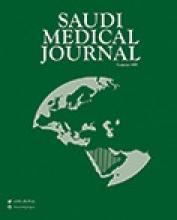Abstract
OBJECTIVE: To identify the risk factors for brucellosis in Palestine, to estimate their association with the disease and to recommend appropriate prevention measures.
METHODS: An unmatched case-control study was conducted in the West Bank of Palestine. A total of 450 subjects (150 cases and 300 controls) chosen from all districts were investigated. Data were collected during the year 2000. Subjects were interviewed using a standard questionnaire acquiring demographic and risk factor information. Laboratory results were also recorded on the questionnaire. Data were analyzed calculating the odds ratio and the confidence intervals for the studied variables. A logistic regression model was used to explore the association between disease status and the studied variables.
RESULTS: Several variables were significantly associated with brucellosis involving both direct and indirect transmission such as consumption of unpasteurized milk and dairy products, herding, lambing and others.
CONCLUSION: Most of the risk factors for being infected with brucellosis are modifiable. Efforts should be directed to the prevention of this major public health problem in Palestine utilizing the information obtained in this study.
- Copyright: © Saudi Medical Journal
This is an open-access article distributed under the terms of the Creative Commons Attribution-Noncommercial-Share Alike 3.0 Unported, which permits unrestricted use, distribution, and reproduction in any medium, provided the original work is properly cited.






